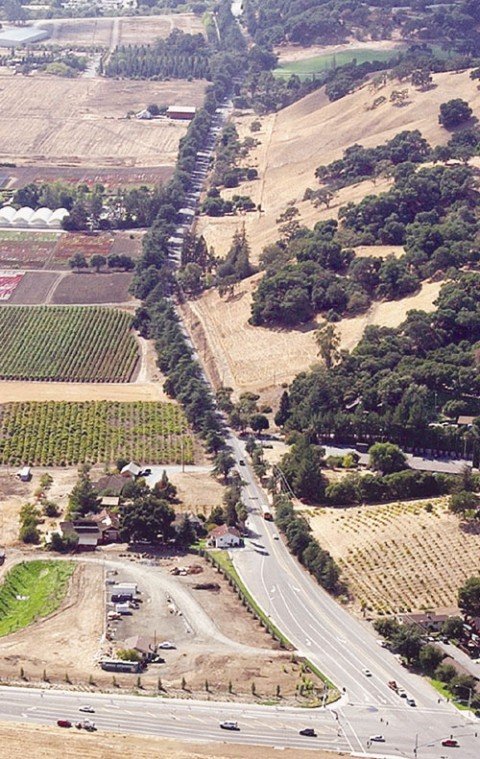The federal government has recognized a stretch of cedars lining
west Gilroy’s rural gateway as historically significant, but this
won’t prevent tree-removing road developments.
Gilroy – The federal government has recognized a stretch of cedars lining west Gilroy’s rural gateway as historically significant, but this won’t prevent tree-removing road developments.
The 115 Deodar cedars and 20 oak cedars along Hecker Pass Highway were included in the National Register of Historic Places July 3.
This came two months after the California State Historical Resources Commission unanimously recommended that the national inventory include the redolent trees in May.
Despite the historical nod from Washington, the designation doesn’t translate into absolute protection for the trees. It’s simply another hurdle for developers – private or public – to jump if they want to tear down some of the trees for a road or bridge.
“Being listed doesn’t prevent any project, but [developers] will have to go through a process set by the National Historic Preservation Act [of 1966],” said Patricia Ambacher, an historian at the California Office of Historic Preservation who referred to a section of the preservation act that basically requires extra review of a project if it affects a registered entity.
“This provides limited protection, but it’s not a guarantee that a building or property can’t be built or torn down,” Ambacher said, adding that a City Council resolution can supersede historic designation: “Restrictions are handled by the local government.”
In some cases, a regulatory review can lead to alternative project designs or “mitigations” such as planting new trees.
Thanks to work by the Gilroy Historical Society and Save Open Spaces Gilroy, two dozen of the trees were saved last year following months of debate on plans to widen the scenic highway to accommodate hundreds of new homes. Four trees remain on the chopping block to make way for a future intersection facing Gilroy Golf Course, but their fate still remains uncertain.
“This doesn’t mean that no development can go on. It just means that the bar has been raised,” said David Collier, member of SOS. “It’ll give future development a bit of a pause if they try to tear them down.”
The trees lining the 1.39-mile stretch, between Santa Teresa Boulevard and Uvas Creek, were planted on National Arbor Days in 1930 and 1931.
The area was nominated for inclusion on the list by the Gilroy Historical Society.
Connie Rogers, president of the historical society, said the state Department of Transportation unearthed much of the history of the trees in the course of a review on a project to relocate the Hecker Pass bridge spanning Uvas Creek.
The transportation agency learned that local Boy Scouts, Camp Fire Girls, members of the American Legion Auxiliary and Rotary Club, and others planted the first of the cedars March 7, 1930. On that Arbor Day, roughly 25,000 trees were planted across California, the state’s contribution to a nationwide movement to beautify highways as driving emerged as an American pastime.
“We at the council have tried and will continue to try and save as many trees as we can, whether they’re on the National Register or not,” Mayor Al Pinheiro said in May. “The point is, it’s a beautiful area of Gilroy and the more trees we can save, the better it is for all of us.”














